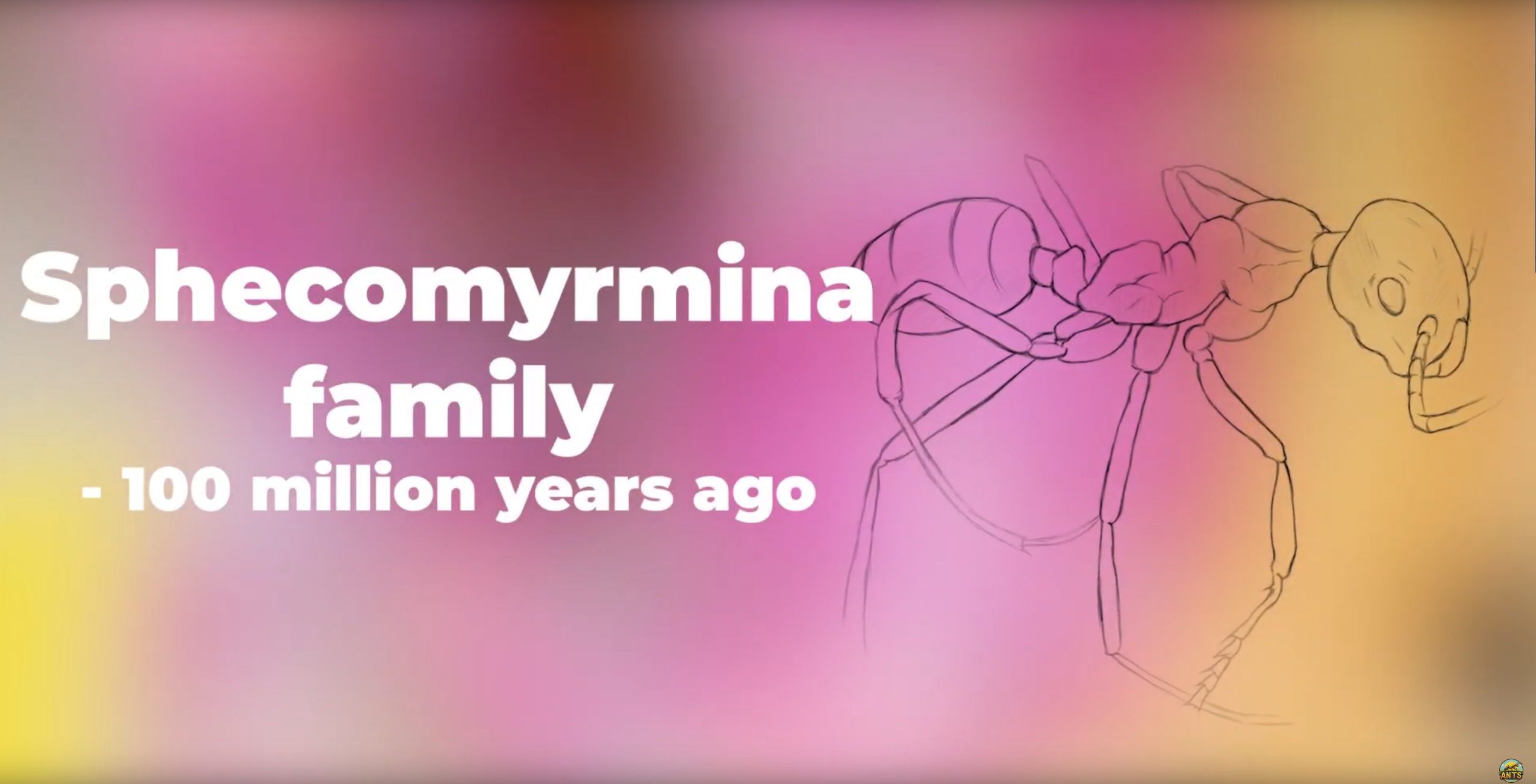maurhistorie
Hvordan asteroiden som drepte dinosaurene hjalp maurene med å ta over verden
Hvordan asteroiden som drepte dinosaurene hjalp maurene med å ta over verden
Fra aske til imperium: Hvordan maurene tok over etter asteroiden
For 66 millioner år siden traff en fjellstor asteroide jorden med apokalyptisk kraft. Den skar ut Chicxulub-krateret i det som i dag er Mexico, innhyllet planeten i ild og støv og satte en brå sluttstrek for dinosaurenes tidsalder.
Ødeleggelsene var nesten totale: skogene brant, himmelen ble mørkere, næringskjedene kollapset. Tre av fire arter på jorden forsvant, men i denne planetariske katastrofen var det noen av de minste skapningene på jorden som ikke bare overlevde, men også blomstret opp. Maurene, som den gang var en ubetydelig art i insektverdenen, grep muligheten som ble skapt av utryddelsen, og begynte sin lange vei mot økologisk dominans.
Hvis du ønsker å støtte oss, kan du bestille en plakat; Følg lenken til maurplakater og få 10% rabatt med kampanjekoden antblog10.
Maur før nedslaget: Sjeldne og lite bemerkelsesverdige
Fossilene forteller en ydmykende historie. Maurene hadde allerede utviklet seg i midten av kritt, for omtrent 100 millioner år siden. Men de var økologiske fotnoter: Delikate ravfossiler fra den tiden, som Sphecomyrma, tyder på at de var sjeldne og spesialiserte. Færre enn ett av hundre insektfossiler fra denne epoken er maur.

Til sammenligning er maur i dag blant de mest tallrike dyrene på landjorden. Noen anslår at maur alene står for mer enn 15 prosent av all biomasse av landlevende dyr - et nesten ufattelig tall for så små skapninger. Det er tydelig at det skjedde noe dramatisk i den dype fortiden som gjorde at maurene gikk fra å være ukjente til å bli allestedsnærværende.
Hvorfor maurene overlevde da dinosaurene ikke gjorde det
Chicxulub-nedslaget var katastrofalt på alle tenkelige måter. Sjokkbølgene utløste globale skogbranner. Støv og aerosoler skjulte solen i månedsvis og kastet jorden ut i en "nedslagsvinter". Planter visnet, planteetere sultet, og de store rovdyrene fulgte etter.
Og likevel fortsatte maurene å eksistere. Hvorfor det? Evolusjonen hadde allerede utstyrt dem med egenskaper som viste seg å være superkrefter for overlevelse i en verden som kollapset:
- Underjordiske festninger - Maurene levde under jorden, der jordsmonnet beskyttet dem mot brann, varme og voldsomme klimasvingninger.
- Sosial motstandskraft - Kolonier, i motsetning til solitære insekter, sprer risiko. Hvis arbeiderne omkom, kunne dronninger og yngel holde slekten i live.
- Økologisk fleksibilitet - Maurene var opportunister som spiste frø, nektar, insekter, til og med sopp eller hva som måtte være igjen av ressurser.
Ledig økologisk plass - Da dinosaurene og andre dominerende dyr forsvant, ble økosystemene omorganisert. Maurene var i posisjon til å utnytte de nye mulighetene.
På sett og vis hadde maurene øvd seg på katastrofen hele tiden.
Fossile ledetråder: En eksplosjon av mangfold

Bevisene for dette evolusjonære spranget er skrevet i stein og rav.
- Fossiler fra sen kritt avslører en håndfull primitive, spesialiserte maur.
- Avleiringer etter nedslaget fra tidlig paleogen viser en påfallende økning i mangfoldet. Plutselig dukker maur opp i mange former og fyller flere økologiske roller.
- Fylogenetiske studier bekrefter mønsteret: De fleste moderne maurunderfamiliene - Formicinae, Myrmicinae, Dolichoderinae - oppsto kort tid etter asteroidenedslaget.
Det var som om utslettelsen ryddet scenen, og maurene stormet frem for å fylle det tomme rampelyset.
Planter + maur = et perfekt partnerskap
Historien slutter ikke med overlevelse. Gjenoppblomstringen av blomstrende planter etter asteroidens ødeleggelser ga maurene ny næring til evolusjonen. Etter hvert som angiospermene spredte seg over hele planeten, tilpasset maurene seg raskt til overfloden av dem, og inngikk partnerskap som varer den dag i dag:
- Spredning av frø (myrmecochory), som bærer frø under jorden i bytte mot mat.
- Innhøsting av nektarog nipper til sukkerholdige sekreter fra blomster og spesialiserte kjertler.
- Pleier honningduggDen beskytter saftsugende insekter i bytte mot deres søte ekskrementer.
Den store ideen
Utryddelsen i kritt-paleogen var ikke bare en massedød, den var også et øyeblikk av evolusjonær fornyelse. Mens dinosaurene gikk under, skapte den en verden der maurene kunne blomstre.
Med sosialt samarbeid, økologisk fleksibilitet og en evne til å danne allianser har maurene snudd motgang til muligheter. Fra å være en spredt minoritet i kritttiden ble de til dagens globale kraftsentre som former jordsmonn, forvalter skoger og påvirker økosystemer på planetarisk skala.
Videre lesning
- Moreau, C. S., & Bell, C. D. (2013). Testing av hypotesen om tropisk biologisk mangfold i museet versus vuggen: fylogeni, diversifisering og utvikling av maurens biogeografiske utbredelsesområde. Evolusjon, 67(8), 2240-2257.
- Wilson, E. O., & Hölldobler, B. (2005). Maurens fremvekst: en fylogenetisk og økologisk forklaring. PNAS, 102(21), 7411-7414.
- Labandeira, C. C., & Sepkoski, J. J. (1993). Insektmangfold i fossile kilder. Science, 261(5119), 310-315.
- Grimaldi, D., & Engel, M. S. (2005). Insektenes evolusjon. Cambridge University Press.









Maurene diversifiserer seg som aldri før. Det er sprøtt å forestille seg at maurarter er så gamle!